2014 marks the centenary of military aviation in Australia. To commemorate this I am writing a six-part series of articles on the key stages of the RAAF: The Early Years – 1914 to 1939 (World War One and the interwar years), World War Two – 1939 to 1945, The Cold War begins and the Korean War – 1945 to 1953, South East Asian Conflicts – 1950 to 1972, Peacekeeping and Modern Conflicts – 1973 to 2014 and finally The Future (the re-equipping of the RAAF). Lets now take a look at the start of the Cold War when following World War Two, Europe was divided and the Western allies started to be at loggerheads with the Soviet Union and her Communist allies.
POST WORLD WAR TWO
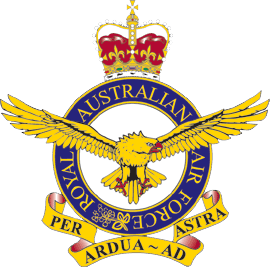 Immediately following World War Two the RAAF once again downsized for peace time operations just as they did after World War One. By 1947 the RAAF had been reduced to around 11,000 personnel but the Australian Government planned to operate a permanent force of 13,000 personnel and 144 aircraft across 16 squadrons. This was also the era which saw the introduction of jet aircraft into RAAF service and the involvement of RAAF aircraft in the occupation of Japan, the Berlin Airlift, the Korean War, the Malayan communist insurgency and a garrison deployment of 2 fighter squadrons on the island of Malta from 1952 to 1954 (Number 75 and 76 squadrons flew de Havilland Vampire jet fighters hired from Great Britain for the deployment).
Immediately following World War Two the RAAF once again downsized for peace time operations just as they did after World War One. By 1947 the RAAF had been reduced to around 11,000 personnel but the Australian Government planned to operate a permanent force of 13,000 personnel and 144 aircraft across 16 squadrons. This was also the era which saw the introduction of jet aircraft into RAAF service and the involvement of RAAF aircraft in the occupation of Japan, the Berlin Airlift, the Korean War, the Malayan communist insurgency and a garrison deployment of 2 fighter squadrons on the island of Malta from 1952 to 1954 (Number 75 and 76 squadrons flew de Havilland Vampire jet fighters hired from Great Britain for the deployment).
With so many responsibilities and conflicts the planned downsizing of the air force didn’t meet the plan and by 1952 the RAAF peaked at a force of approximately 16,000 personnel and was maintained at around 15,000 for most of the following decade. From the late 1940’s to the mid 1950’s up to half of the RAAF squadrons available were deployed overseas. During that period Citizen Air Force Squadrons became highly important back in Australia where they were mainly tasked with training fighter pilots and ground crew to join RAAF squadrons on deployment and on the front line.
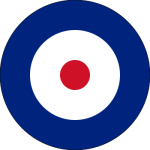
RAAF ROUNDEL
Post war the RAAF returned to the red, white and blue roundel that was in use from 1914 to 1942. During World War Two the red dot was removed to avoid being confused with Japanese aircraft! After the war it was reintroduced and remained on RAAF aircraft until 1956 when the famous Kangaroo roundel was implemented.
OCCUPATION OF JAPAN
Following victory over the Axis powers in World War Two the RAAF had 3 fighter squadrons and some 2000 servicemen in the British Commonwealth Occupation Force in Japan. RAAF No. 76, 77 and 82 Squadrons were deployed to Japan in 1946 (the first of the Australian forces arrived on February 21st, 1946) and made up half of the Commonwealth air assets in the occupation force. The squadrons were equipped with North American P-51D Mustangs.

The purpose of the occupation force was to maintain military control within Japan, supervise demilitarisation of the country and dispose of what was left of Japan’s war-making capability. RAAF aircraft conducted patrols to detect illegal immigration and to locate remaining weapons stores around the country. The demilitarization process was basically completed in 1946 and the remaining period of time within the country was partially to guard the nation but also to conduct training. By 1948 only No. 77 Squadron remained on active duty in Japan. With the advent of the Korean War in 1950, Australian forces would remain in Japan until December 1954.
THE COLD WAR BEGINS
At the end of World War Two the German capital of Berlin was divided with East Berlin controlled by the USSR and West Berlin split into zones controlled by Britain, France and the USA. The intention was that the four major allied powers would act as a provisional government, known as the Allied Control Council to control and rebuild the city. Berlin was well inside the part of the country that was also controlled by the USSR. The western allies planned to rebuild and reunify the country. This and their overall ideology did not fit the plans of the USSR (who by then effectively controlled most of Eastern Europe by installing communist governments) and on June 24th, 1948 they decided to close off Berlin and blockaded road and water access and cut off all western supplies necessary to run and feed the city (including the occupation forces and the 2 million populace).

The intention of the blockade was to get the western allies out of the city so the Soviets could assume total control. Of course the western allies were not going to stand by while this happened but any attempt to break the land blockade was likely to erupt into World War Three which no one wanted. This is when the remarkable plan developed by the British to supply the city by air was hatched and the Berlin Airlift became a reality.
Berlin Airlift
A 1945 agreement between the allied powers including the USSR left 3 air corridors open to supply Berlin and given it was in writing there was nothing the Soviets could do about it. From June 1948 to September 1949 over 277,000 flights delivered 2.3 million tons of supplies into Berlin. Flights were coming in just minutes apart, day and night regardless of what ever weather they encountered! Although the Soviets did their best to harass the flights (including fighters buzzing the flights, shooting near them and the like, but never enough to start a war), they eventually gave up on the blockade on May 12th, 1949. Despite this back down the city continued to be divided until the Berlin Wall fell in 1989.

This period is an amazing part of history and one that the RAAF also made a contribution to. From September 15th, 1948 to August 29th, 1949 RAAF crews from No. 36 and 38 Squadrons joined RAF No. 24 (Commonwealth) Squadron and flew over 6,000 hours during 2,062 sorties to help in the resupply of Berlin in what was termed Operation Pelican by the RAAF. No aircraft were provided by the RAAF, only aircrews (41 personnel) who flew RAF Douglas C-47 Dakota aircraft (enough personnel to fly 10 aircraft). During the airlift one Australian airman, Flight Lieutenant Mel Joseph Quinn a World War Two veteran sadly lost his life on March 22nd, 1949 during a landing accident at Lübeck, Germany whilst on detachment with RAF No. 27 Squadron.

COMMUNIST SURGE
Peace was not at hand for very long though and a new enemy emerged, the Communists of Asia. There were insurgencies to fight in Malaya during the Malayan Emergency from 1950 to 1960 and then also in 1950 the North Koreans stormed into South Korea kicking off the Korean War (June 25th, 1950 to July 27th, 1953).
THE MALAYAN EMERGENCY
In 1948 communist insurgents started a guerilla warfare campaign in Malaya to rid the region of British colonial rule. By 1950 Australia had joined the Commonwealth forces involved in the fight with the communists in what had become known as the Malayan Emergency. No. 38 Squadron flying Douglas C-47 Dakota transport aircraft was deployed first and they were soon involved in supply drops to the troops and police fighting the insurgents in the jungle. The Dakota’s were also used to deploy paratroopers and drop propaganda leaflets to the insurgents below. They were joined by No. 1 Squadron flying Avro Lincoln bombers out of Singapore and used to bomb communist targets. The bomber squadron flew 3,000 sorties over Malaya from 1950-1958 (they were later replaced by jet powered Canberra bombers).

The Malayan Emergency was not declared as being over until 1960. Australia was well and truly of the front line battle against the spread of communism in South East Asia which would extend well into the 1970’s (more on that in my next article in this series).

THE KOREAN WAR
No. 77 Squadron
RAAF No. 77 Squadron flying North American P-51D Mustangs had been stationed in Iwakuni in Japan as part of the British Commonwealth Occupation Force since early 1946 but by June 1950 they were preparing to pack up get their aircraft ready for shipping back to home. With the South Koreans and UN forces being pushed further and further south to a pocket in Pusan (Busan) by the North Koreans, No. 77 Squadron was requested specifically by US Commander General Douglas MacArthur and their Mustangs were quickly diverted to help out.

Just 7 days after the conflict began the RAAF provided some of the first UN aircraft to participate in that war and were soon in action escorting bombers, conducting armed reconnaissance flights and attacking ground targets. No. 77 Squadron operated American built Mustangs that were from the 299 imported during World War Two in 1945 rather than from the 200 Commonwealth Air Corporation (CAC) versions built in Australia from mid 1945 (only 4 of the CAC examples saw service in Korea, but not until late March 1951).


With the communist North Korean forces running amok in South Korea there was no shortage of targets from large troop concentrations, to bridges, transport vehicles, armoured vehicles including Soviet designed T-34 tanks and self-propelled guns along with gun emplacements and the railways. Taking out transports was highly important to block roads and stop supply to enemy troops on the front line.The first mission by the RAAF over North Korea occurred on July 2nd, 1950 with Mustangs escorting USAF Boeing B-29 Superfortress bombers.


The first loss of the squadron occurred on July 7th, 1950 when Squadron Leader Graham Strout was killed during a ground attack mission by 4 Mustangs on the railway at Samchok in Eastern South Korea (most likely shot down by ground fire). July and August of 1950 was a period of heavy combat for the squadron as the North Koreans pressed their attack on the Pusan perimeter in the far south of Korea. On September 3rd, 1950 Pilot Officer Bill Harrop was shot down and captured by North Korean troops who immediately executed him! This was a sad time for members of the squadron, but it would get much worse.
Two interesting characters emerged during this sad period. RAAF Chaplain, Reverend Esmond New and Sergeant Tom Henderson who was an expert in search and rescue operations. During December 1950 and January 1951 these men accompanied by South Korean commandos risked their lives in dangerous areas of North Korea held territory to locate the two missing Australian airmen (sometimes under conditions with small arms fire being shot overhead).They succeeded in their grisly mission and retrieved their bodies for formal burial in Pusan (Busan).


Wing Commander Lou Spence
No. 77 Squadron was led by Wing Commander Lou Spence (1917-1950) a World War Two veteran who had served in the RAAF since 1940 and earned a Distinguished Flying Cross in 1942 for his bravery and acts of valour in combat over North Africa. Spence led from the front and flew many combat missions in Korea (more than a commander would normally fly). He was sadly killed in action on September 9th, 1950 during a low-level raid by 4 RAAF Mustangs against a storage facility recently captured by the enemy in Angangi-ni north of Busan in South Korea. The weather and visibility was poor that day and following a steep dive he was unable to pull out before crashing.

2 weeks prior to his death Wing Commander Lou Spence was honoured with the award of the American Legion of Merit for exceptional meritorious conduct in the act of duty (in order of precedence it is the sixth highest US military award). The medal was presented to him by Lieutenant General George E. Stratemeyer the commander of the US Far East Air Forces. Posthumously he also received the American Air Medal awarded for meritorious achievement in flight and a bar to his DFC for his acts of bravery. His loss plummeted the morale of No. 77 Squadron.

In 2008 I visited the United Nations Memorial Cemetery in Busan, South Korea to pay my respects at the grave site of Wing Commander Lou Spence. Whilst there I also located the graves of Squadron Leader Graham Strout and pilot Bill Harrop, the first RAAF victims of the Korean War. It was nice to see the cemetery was well maintained and a respectful final resting place for these Australian heroes.
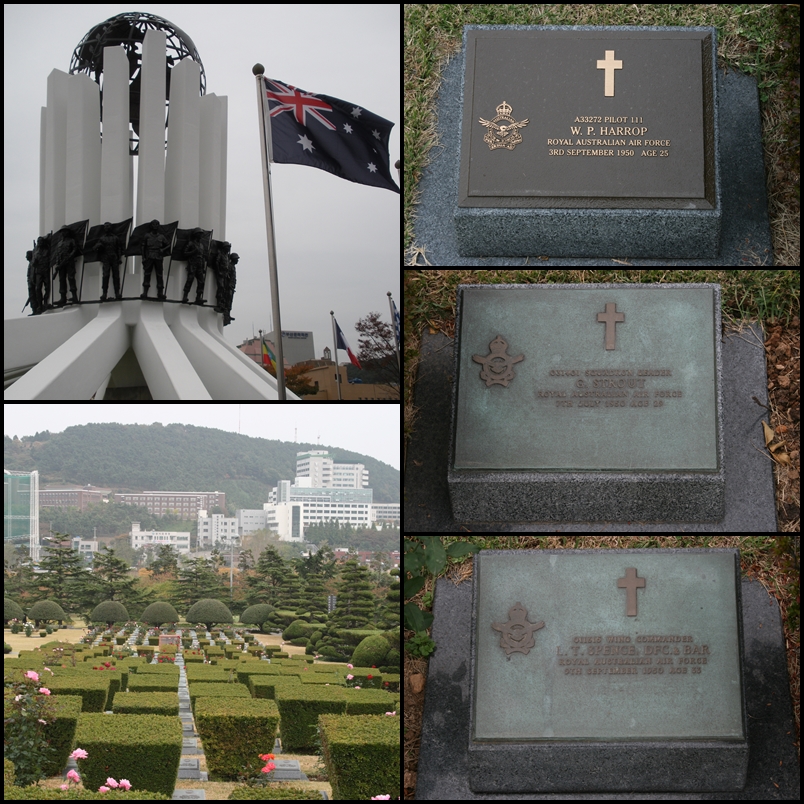
Squadron Leader Dick Cresswell

Following the tragic death of Lou Spence, Squadron Leader Dick Cresswell (1920-2006) took over command of No. 77 Squadron on September 17th, 1950. This was the third time he had led the squadron in wartime with his previous commands being in World War Two (he was known as “Mr. Double Seven” in RAAF circles).
Cresswell commanded the squadron in the defence of Australia for 15 months from April 1942 (becoming the first Australian to shoot down a Japanese aircraft at night over the Australian mainland on November 23rd, 1942 when he intercepted 3 Mitsubishi G4M ‘Betty’ bombers over Darwin – on his first pass he shot and hit all 3 from his Curtiss P-40E Kittyhawk, breaking up the formation he was able to bring one of the bombers down on consecutive passes), then again from September 1944 to March 1945 in the Netherlands East Indies.
Cresswell was regarded as an exceptional leader and lifted the morale of No. 77 Squadron following their tragic losses. Just six days after arriving to take command of the squadron, Cresswell flew the first of his 144 combat missions in Korea.
Pusan Perimeter and the UN Counter Offensive

By the time Cresswell arrived in Korea, the South Korean and UN forces literally had their back to the wall with the North Koreans bearing down on them in the isolated pocket around Busan. Every pilot of the squadron was flying up to 6 sorties a day against North Korean targets to keep them at bay. UN forces were reinforced by air and sea to strengthen the Pusan perimeter.
Then in a stunning UN counter offensive in mid September 1950 (aided by the Inchon amphibious landings behind enemy lines by US and South Korean troops on September 15th and superior air power) the UN Forces pushed the North Koreans (whose supply lines were very strained) back to the 38th parallel that divided north from south and liberated Seoul on September 26th, 1950.
On October 1st, 1950 the army of South Korea crossed the 38th Parallel and 6 days later UN troops joined them. By October 15th, 1950 the North Korean capital of Pyongyang was captured and by the end of the month 135,000 North Korean soldiers were held as prisoners of war.
China Enters the War
North Korean leader Kim Il-sung sent an urgent plea to his Communist counterpart Mao Zedong for military assistance. As UN forces got closer to the Chinese border, Josef Stalin advised China to send troops into North Korea to stop the rout. Following numerous discussions and meetings between the communist leaders, authorization was eventually given for Chinese military intervention and 200,000 Chinese troops entered North Korea on October 25th, 1950. A war that looked like it was won had in reality had only just begun.

With the entry of the Chinese also came the vastly superior Mikoyan Gurevich MiG-15 jet fighter (supplied by the Soviet Union and some were secretly flown in combat by Soviet pilots) that totally outclassed any piston engined fighter operating in the theatre including the RAAF CAC Mustangs and left the bombers of UN forces highly vulnerable to air interception. The MiG-15’s started making sorties on November 1st, 1950 and UN forces including those of the Commonwealth needed to re-quip with jet fighters urgently to combat this new threat. This would become the first war to see air to air combat between jet fighters.

On November 5th, 1950 No. 77 Squadron provided close support for Australian troops for the first time in the war. The men of the 3rd Battalion of the Royal Australian Regiment (3RAR) had a huge morale boost when the Aussie Mustangs flew overhead firing rockets and dropping napalm on Chinese positions in the Taeryong Valley. These attacks and subsequent strafing runs on the retreating Chinese allowed the 3RAR to capture their objectives that were once held by the Chinese. The squadron performed its duty well that day and kept their countrymen from harm. 3RAR Major Bruce Ferguson described the close support provided by No. 77 Squadron on that day as “the closest I have ever seen”!

Jet Combat with the Meteor
No. 77 Squadron was withdrawn from combat and re-equipped in Japan with the British built Gloster Meteor Mk.8 jet fighters in April 1951 and became operational on July 29th, 1951 (initially 15 single-seat Meteor Mk.8’s and 2 dual-control T.Mk.7 trainers were delivered on February 24th, 1951 to Japan with 22 additional Mk.8’s arriving on March 23rd, 1951. The squadron went on to operate ninety three Mk.8 fighters and six T.Mk.7 trainer variants). Although the Meteors top speed of 965 kmh / 600 mph was not as fast as the MiG-15 (1,059 kmh / 658 mph) and not a real match for it in combat the Meteor was the best jet available to Commonwealth forces at that time (the North American F-86 Sabre could not be delivered in time and were required by the USAF).
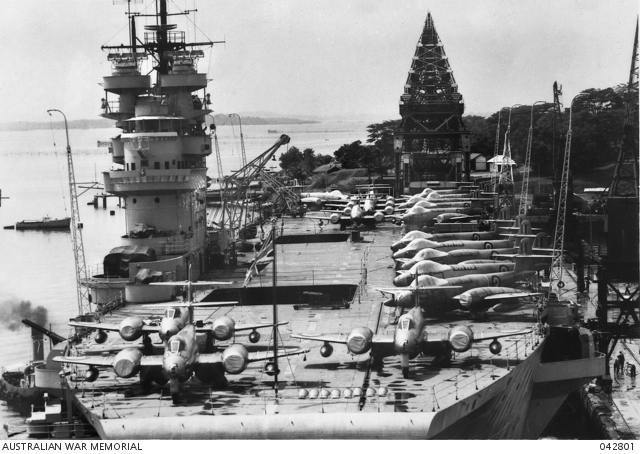

At first the Meteor was used in an air to air role, but on the first engagement with MiG-15’s on August 29th, 1951 RAAF pilots flying the Meteor were outnumber 4:1 and got mauled with one being shot down and another badly damaged. Warrant Officer Ron Guthrie had to eject over North Korea and became a Prisoner Of War but the damaged Meteor managed to make it back to base. Further engagements did not go well for RAAF pilots and eventually the Meteor was switched to a close support and ground attack role.
The squadron became very effective in this new role. The Meteor had good low-level performance and its sturdy construction meant it could withstand a lot of damage. The armament of 4 x 20mm cannons along with under wing bombs or rockets packed a suitable punch for ground attack missions too. As a mark of respect for the squadron on November 1st, 1951, the South Korean government presented them with a Presidential Citation for “exceptionally meritorious service and heroism“. Amongst the many military awards given to the pilots of the squadron for their service the most prominent were the 47 Distinguished Flying Crosses for bravery. The squadron fought gallantly for sure but their was a high price to pay for such bravery.

It was a major leap to go so quickly from piston engined fighters to those powered by jets, especially under wartime conditions. As such accidents occurred and operational effectiveness was reduced (5 aircraft were lost in training accidents). The RAF instructors who initially trained RAAF pilots on their conversion to the Meteor had no combat experience against MiG-15 fighters and no specialist instructors were sent from Australia to improve combat tactics. As such Cresswell introduced extra training in Japan to bring his pilots up to speed with the new aircraft and back to a high combat proficiency.

The Gloster Meteor remained as the RAAF’s frontline aircraft for the remainder of the war and flew the bulk of the 18,872 sorties conducted by No. 77 Squadron throughout the Korean War (3,872 sorties were flown in Mustangs and 15,000 in the Meteor). During those missions they destroyed 3,700 structures, around 1,500 vehicles enemy vehicles, 20 train engines (along with numerous carriages) and 16 bridges.

One particularly famous ground attack mission conducted by No. 77 Squadron occurred on March 16th, 1953. It turned out to be one of the largest actions taken by RAAF pilots in the Korean War when around 140 vehicles were spotted in a closely grouped up convoy on a road in hills near Wonsan on the east coast of North Korea. The leader of the air patrol and his wingman who spotted the convoy immediately attacked the front and rear vehicles to block the road and prevent vehicles from escaping. They then called in another nearby RAAF patrol to help out, but given the size of the target even more Meteors were called in from the airbase at Kimpo in South Korea. Eventually even American fighters joined in the attack. The communist forces were putting up an enormous amount of fire from the ground but soon 90 vehicles were destroyed and although several were damaged no RAAF aircraft were lost in the attack.

Although the Meteor was switched to close support and ground attack roles, the MiG-15 encounters did not end there. RAAF pilots did manage to shoot down 3 MiG-15’s for a loss of 5 Meteors in air to air combat (some of these losses were accounted for by Soviet pilots flying MiG-15’s including Soviet air ace Lt. Colonel Sergey Vishnyakov).
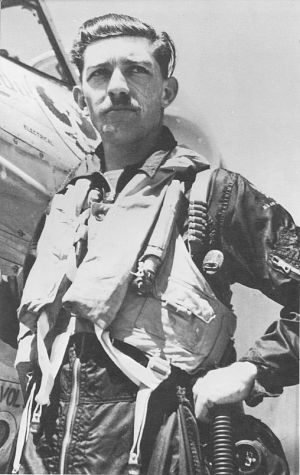
The first MiG-15 to fall to the guns of an RAAF Meteor occurred on December 1st, 1951 during a massive dogfight between 40 to 50 MiG-15’s and just 12 Meteors over the North Korean capital of Pyongyang ! 3 of the Meteors were quickly damaged in the encounter but only 1 had to return to base in Kimpo. While this was going on Flying Officer Bruce Gogerly got on the tail of one of the communist jets and raked it with his cannons resulting in the RAAF’s first MiG-15 victory. During the battle another MiG-15 was also possibly shot down but the RAAF lost 3 Meteors (2 pilots were captured with a third being killed in action) plus the 3 that were damaged. It was a costly encounter to achieve this first victory.
On March 27th, 1953 a historic moment for the RAAF occurred when 2 Gloster Meteor Mk.8’s flown by Sergeants George Hale and David Irlam were conducting a reconnaissance mission near Sinmak in North Korea when Hale spotted and engaged what he thought was a single MiG-15. It turned out to be 3 of them! He shot one down and then 2 more MiG-15’s joined the engagement. Irlam’s Meteor was damaged and he had to leave the battle. Hale managed to damage another MiG-15 and fought it out with them until he ran out of ammunition and then disengaged and made a low-level return to the base at Kimpo (he was credited with 1 victory and 1 damaged MiG).
Sergeant George Hales Meteor was named “Halestorm” and he flew 131 combat missions in Korea between December 1952 and June 1953. He served in the RAAF until March 1958 achieving the rank of Flying Officer and remains the last Australian pilot to date to engage in air to air combat.


Despite their success, flying low-level combat missions over mountainous terrain in heavily defended airspace took its toll on the squadron with the loss of 52 aircraft during the conflict primarily from ground fire. Sadly 39 squadron pilots were killed in action (33 Australians and 6 RAF pilots attached to the squadron) and 7 became prisoners of war (6 Australians and 1 RAF pilot).
Apart from enemy air opposition, ground fire and rugged terrain, Korea offered extremes of weather for pilots and ground crews to deal with. From scorching heat in summer that could melt the tarmac of runways to extreme cold in winter that would cover aircraft in ice and snow it was never easy out there! Ground crews would be out in those freezing conditions to scrape ice of aircraft wings. If pilots went down in the water they needed to be rescued quickly if they were to survive the cold water. Also the weather conditions could hamper a pilots vision from rain and fog in winter to heat haze in summer, making it difficult to spot targets and keep an eye out for the enemy in the skies. Dangers were all around!

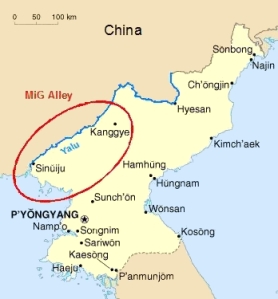
The skilled leadership and bravery of Squadron Leader Dick Cresswell was recognized and he was awarded both an Australian and US Distinguished Flying Cross. The USAF held him in such high regard that he also flew 10 mission in their North American F-86 Sabre fighter which was the equivalent match of the MiG-15. He even flew into China on a reconnaissance mission in the F-86 even though officially such flights were not allowed and the area north of “MiG Alley” (a jet air to air combat hot zone), across the border in China became a safe haven for Communist pilots who could escape there (occasionally UN pilots did fly over the border unofficially to engage in combat too). During this time with the USAF, Creswell reportedly also became the first Australian to break the sound barrier! Cresswell remained as a commander within the RAAF until his retirement from service in 1957. We owe a great debt to his duty to Australia.
Although an armistice was signed on July 27th,1953 to end the conflict, No. 77 Squadron remained in South Korea until October 16th, 1954. All aircraft were then flown to Japan where they were packed up and shipped to Australia. The squadron finally arrived back home on December 3rd, 1954. The squadron was formed in 1942 and continues to provide the sharp edge of the RAAF today, flying the McDonnell Douglas F/A-18 Hornet.
Support Squadrons in Japan
No. 77 Squadron was the only combat element allocated by the RAAF to Korea. Support units remained based in Iwakuni, Japan but were called upon to serve in Korea when required. These included RAAF Number 491 Maintenance Squadron who repaired and maintained RAAF aircraft (they would recover crashed aircraft when required too). Their skill was critical in the Korean War and the squadron were known for their excellent work effort in keeping fighter aircraft well maintained and ready for service at all times (they would work up to 16 hours a day to keep the fighters flying).

No. 491 Maintenance Squadron was formed in Japan in October 1950 and disbanded in Japan in December 1954. The squadron never operated in Australia and interestingly they were assisted by civilian Japanese technicians who had learned their trade during World War Two when servicing military aircraft of the Japanese Imperial forces.

The other 2 squadrons in Japan were RAAF No. 391 Base Squadron and Number 36 Transport Squadron which commenced operations in Korea on July 2nd, 1950 flying 4 Douglas C-47 Dakota’s plus 2 Auster light aircraft (until 1953 this was operated as No. 30 Transport Unit). They flew ammunition, supplies and ground crew into Korea and evacuated sick and wounded Australian and fellow Commonwealth troops back to Japan.



The crews and nurses aboard these flights flew low and often into quite terrible weather (thunderstorms, snow storms, ice, typhoons, dangerous winds, zero visibility and more!) along with dangerous conditions from ground fire and frozen slippery landing fields but they never let the Commonwealth down. Between January 1951 and December 1953 they evacuated 12,762 troops to safety and urgent medical attention.

No. 36 Squadron remained in the region until well after the ceasefire ended the war and did not return to Australia until 1955. The 4 Dakota’s of the squadron remained in Japan until July 8th, 1956 and became RAAF Transport Flight (Japan). Upon their return the flight was disbanded but No. 36 Squadron continues to operate in the RAAF today.

The Korean War was over but the RAAF was still involved in the Malayan Emergency until 1960 and then more conflicts against communist forces broke out in South East Asia. By the 1960’s Australia was once again at war, this time in Vietnam. My next article on the history of the RAAF will cover this conflict and more.
Resources:
Australian Dictionary of Biography
Australia’s Involvement in the Korean War


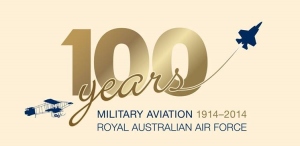
[…] the RAAF: 1914 to 1939 (World War One and the interwar years), World War Two: 1939 to 1945, the Cold War begins and the Korean War: 1945 to 1953 and 1953 to the present day (Communist Insurgency in Malaya, the Vietnam War, Iraq, […]
LikeLike
[…] Years – 1914 to 1939 (World War One and the interwar years), World War Two: 1939 to 1945, the Cold War begins and the Korean War: 1945 to 1953 and 1953 to the present day (Communist Insurgency in Malaya, the Vietnam War, Iraq, […]
LikeLike
An absolutely incredible post! I don’t believe I’ve ever seen one to compare. You have not only outdone yourself, but everyone else on Word Press!
LikeLike
Thanks for the kind words. I kind of had to rush to get it completed for ANZAC day (Australian time) so I am glad I made it in time. Glad you liked it!
LikeLike
THE REASON I CHOOSE THIS PICTURE WAS THE PLANE LOOKED GREAT BUT IT ALSO HAS A REAL GREAT WAR STORIE BEHIND IT
LikeLike
[…] – 1914 to 1939 (World War One and the interwar years), World War Two – 1939 to 1945, The Cold War begins and the Korean War – 1945 to 1953, South East Asian Conflicts – 1950 to 1972, Peacekeeping and Modern […]
LikeLike
Reblogged this on War Machine Museum.
LikeLike
Do you have any further information on 82 squadron insignia? I was told by a former member that the blue and white roundel was squadron emblem during the war, replaced later by a flying horse(when they took delivery of Mustangs) but they did have a chequerboard design on the tail. I have not been able to find a photo of what that looked like
LikeLiked by 1 person
Hi Andrew, sorry I don’t. Perhaps shoot an email to the RAAF museum, or AWM. They might be able to gelp
LikeLike
[…] – 1914 to 1939 (World War One and the interwar years), World War Two – 1939 to 1945, The Cold War begins and the Korean War – 1945 to 1953, South East Asian Conflicts – 1950 to 1972, Peacekeeping and Modern […]
LikeLike
[…] 1914 to 1939 (World War One and the interwar years), World War Two – 1939 to 1945, The Cold War begins and the Korean War – 1945 to 1953, South East Asian Conflicts – 1950 to 1972, Peacekeeping and Modern […]
LikeLike